Ferns are known for their lush, leafy growth and rich colors that can brighten up any indoor space. Perfect as tabletop plants or larger floor plants, ferns come in all shapes and sizes and are available in mini varieties that are perfectly suited for homemade terrariums too.
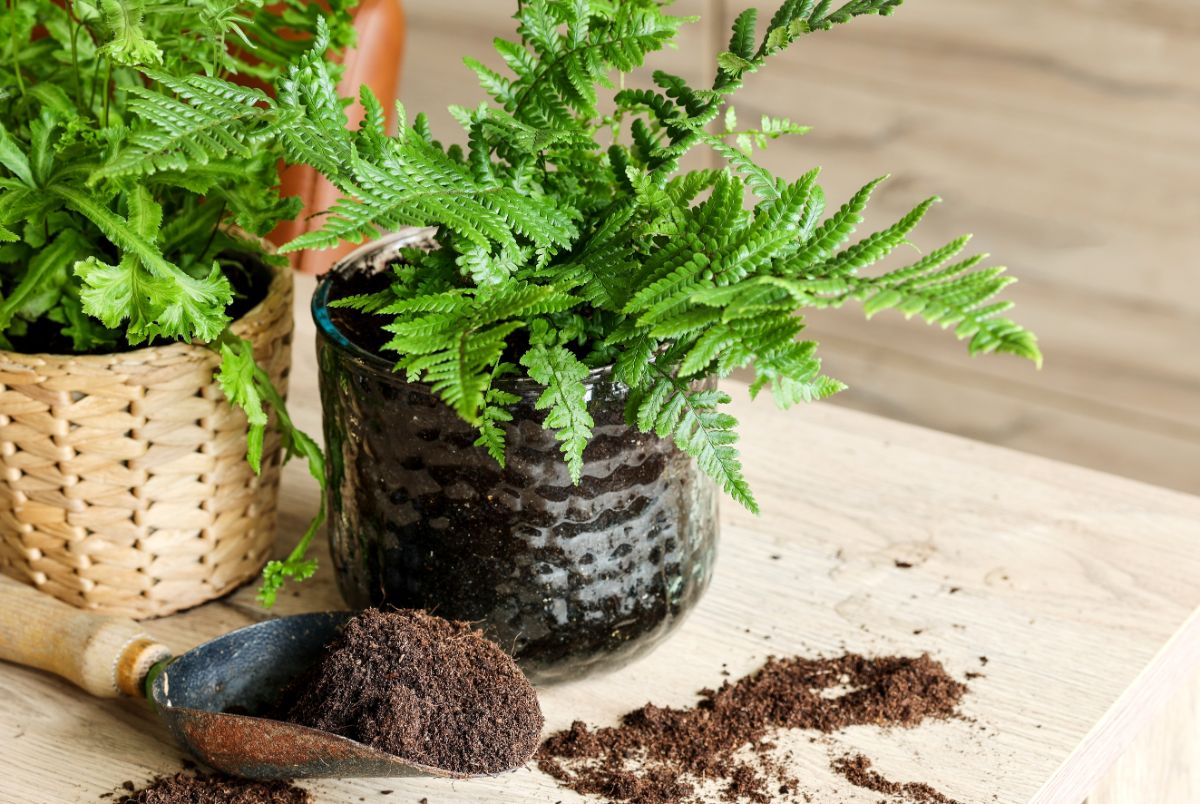
Whether you’re new to fern growing or you have a few ferns already and are looking to expand your collection, you’ve come to the right spot.
In this guide, we’ve compiled some of the most popular ferns around. Read on for our top picks for easy-to-grow ferns, textured varieties, and fern types, with other intriguing features we think you’ll love.
Jump to:
- 15 best fern types to grow indoors
- 1. Boston fern (Nephrolepis exaltata)
- 2. Maidenhair fern (Adiantum pedatum)
- 3. Bird’s nest fern (Asplenium nidus)
- 4. Staghorn fern (Platyceriumbifurcatum)
- 5. Heart leaf fern (Hemionitis arifolia)
- 6. Blue star fern (Phlebodium aureum)
- 7. Lady fern (Athyrium filix-femina)
- 8. Crocodile fern (Microsorum musifolium)
- 9. Rabbit’s foot fern (Davallia fejeensis)
- 10. Lemon button fern (Nephrolepis cordifolia)
- 11. Cretan Brake fern (Pteris cretica)
- 12. Asparagus fern (Asparagus setaceus)
- 13. Kangaroo paw fern (Microsorum diversifolium)
- 14. Hen and chicks fern (Asplenium bulbiferum)
- 15. Holly fern (Cyrtomium falcatum)
- Tips for growing healthier ferns indoors
- Frequently asked questions
- Summary
15 best fern types to grow indoors
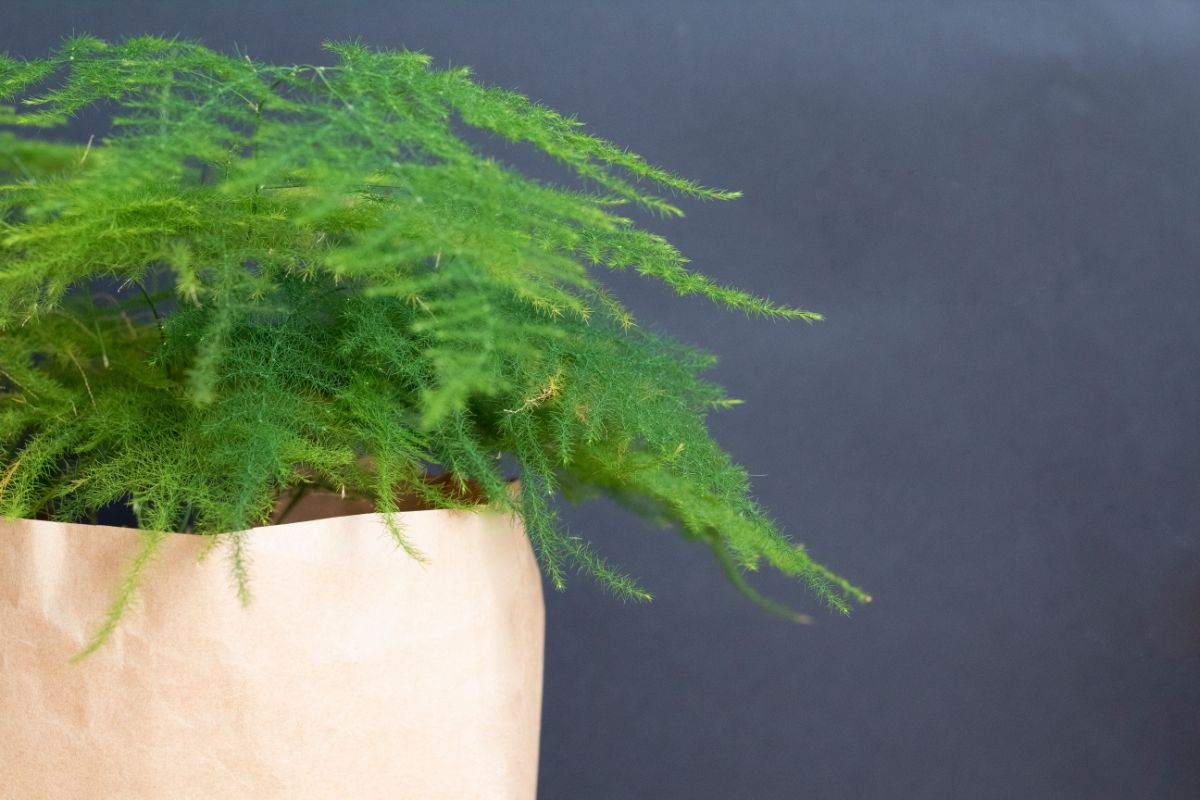
Some of the ferns in the following list have interesting textures and colors, while others are particularly treasured as their easy-going nature makes them ideal for beginning growers. No matter your skill set and growing space, you’ll find a fern to fit your needs here!
1. Boston fern (Nephrolepis exaltata)
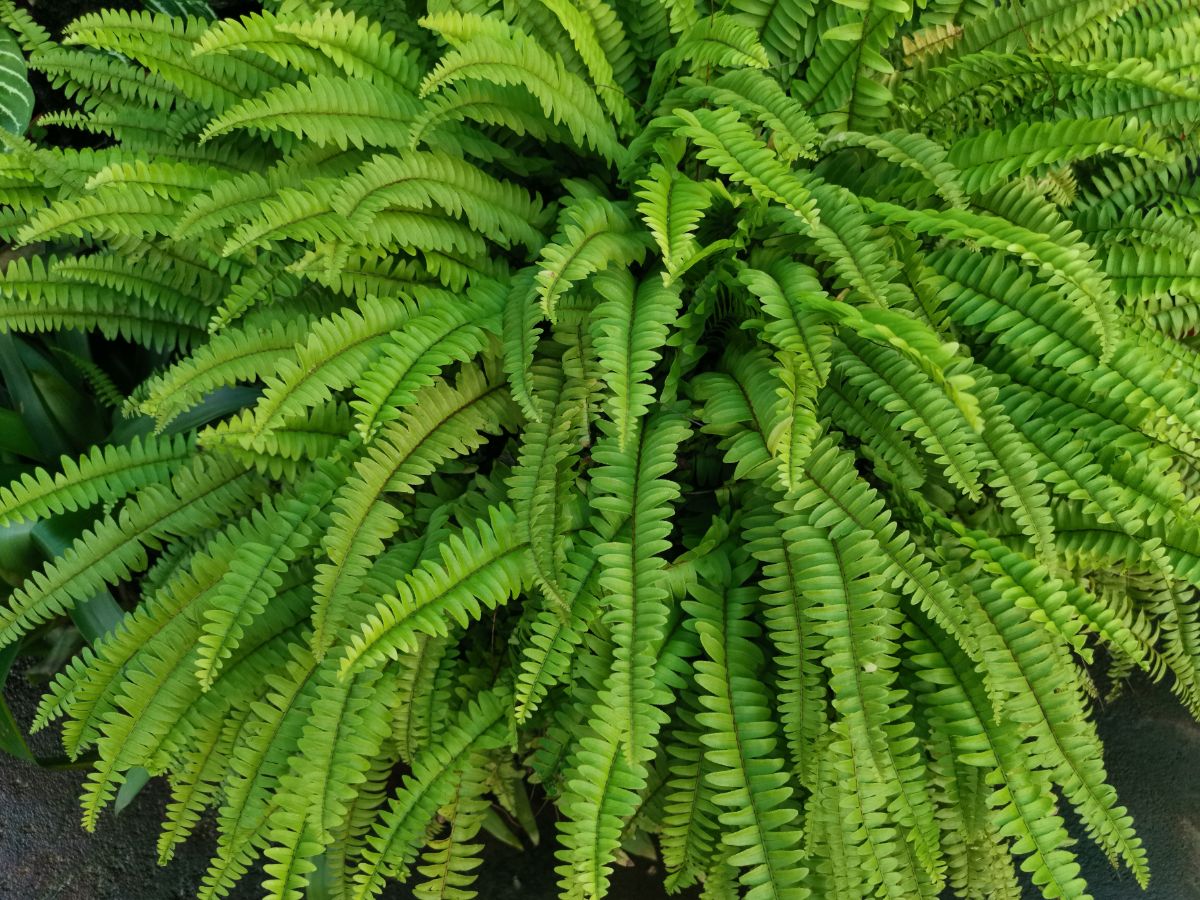
| Fern name: | Boston fern |
| Lighting requirements: | Bright, indirect light |
| Watering requirements: | High to moderate |
| Humidity requirements? | 50% and above |
| Pet safe? | Yes |
One of the most common fern varieties on the market, the Boston fern is much loved by collectors and is a good choice if you’re new to keeping ferns. Boston ferns are less demanding and hardier than some of the other ferns on this list, although they still need higher-than-average indoor humidity levels.
Known for their vigorous growth and rich green leaves that grow in a tight mound, Boston ferns are often kept as outdoor plants in warmer areas, and they make good choices for hanging baskets as well. Provide your fern with plenty of filtered light, and be sure to keep the soil consistently moist but not soggy. If you pick up your plant pot and it feels light, it’s time to water.
2. Maidenhair fern (Adiantum pedatum)
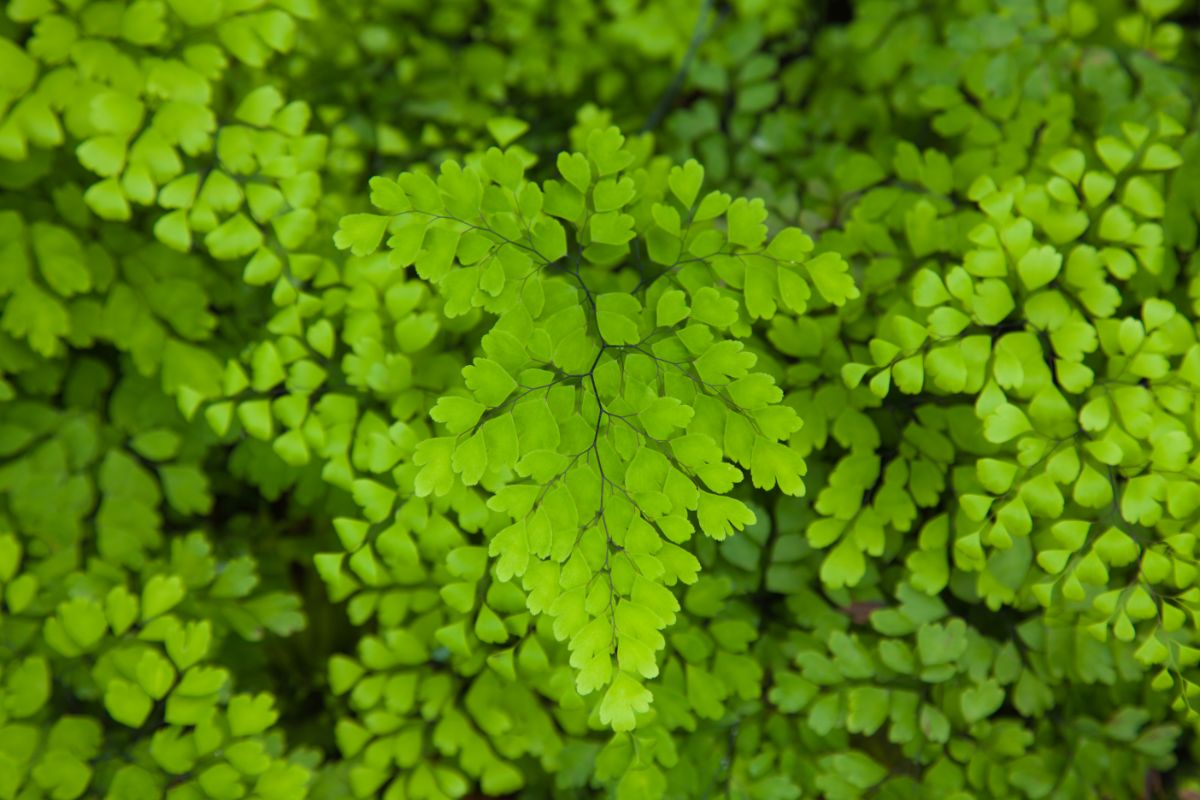
| Fern name: | Maidenhair fern |
| Lighting requirements: | Bright, indirect light |
| Watering requirements: | High to moderate |
| Humidity requirements? | 60% and above |
| Pet safe? | Yes |
A pretty and delicate fern, maidenhair ferns have lacy leaves with gently lobed edges, which give the plant a very distinct look. Foliage is also a bright, lime green hue that can easily make this plant the star of your houseplant collection.
Maidenhair ferns are trickier plants to keep happy, so if you’re a beginning gardener, you may not want to start out with this plant. However, if you’re up to the challenge, provide your fern with plenty of water so that the soil remains constantly moist but not soggy. This fern will also benefit from a monthly application of diluted organic fertilizer.
3. Bird’s nest fern (Asplenium nidus)

| Fern name: | Bird’s nest fern |
| Lighting requirements: | Medium to bright, indirect light |
| Watering requirements: | Moderate |
| Humidity requirements? | 75% and above |
| Pet safe? | Yes |
Also known as the crispy wave fern, the bird’s nest fern has uniquely shaped, pointed leaves with wavy edges for lots of texture. An epiphytic fern, a bird’s nest ferns, naturally grow on palm trees and gets most of the water and nutrients they need from the air. However, when kept indoors, they will happily grow in standard pots too.
Bird’s nest ferns are also notable for their bright green color that stands out from many other indoor fern species. Perfectly pet-safe and non-toxic, these ferns grow best in well-draining, slightly acidic soil. They should also be watered approximately once a week, allowing the soil to dry out just a bit in between waterings.
4. Staghorn fern (Platyceriumbifurcatum)

| Fern name: | Staghorn fern |
| Lighting requirements: | Medium to bright, indirect light |
| Watering requirements: | Moderate |
| Humidity requirements? | 70 to 80% |
| Pet safe? | Yes |
Staghorn fern is a truly unique species that has become very popular among houseplant collectors. Also known as the elkhorn fern, staghorn ferns have large, flat leaves with a slightly fuzzy texture and multiple deep lobes, which makes them slightly resemble the velvety horns of a stag. Below those leaves, staghorn ferns also have noticeable brown shields (gametophytes), which reflect part of the fern’s lifecycle.
Growing as an epiphyte in nature, staghorn ferns are well-suited for hanging baskets or tabletop planters. But many home gardeners choose to mount their staghorn ferns on wooden wall plaques or driftwood for an intriguing display. These plants are also wonderful natural air purifiers, and they’re pet safe too.
5. Heart leaf fern (Hemionitis arifolia)
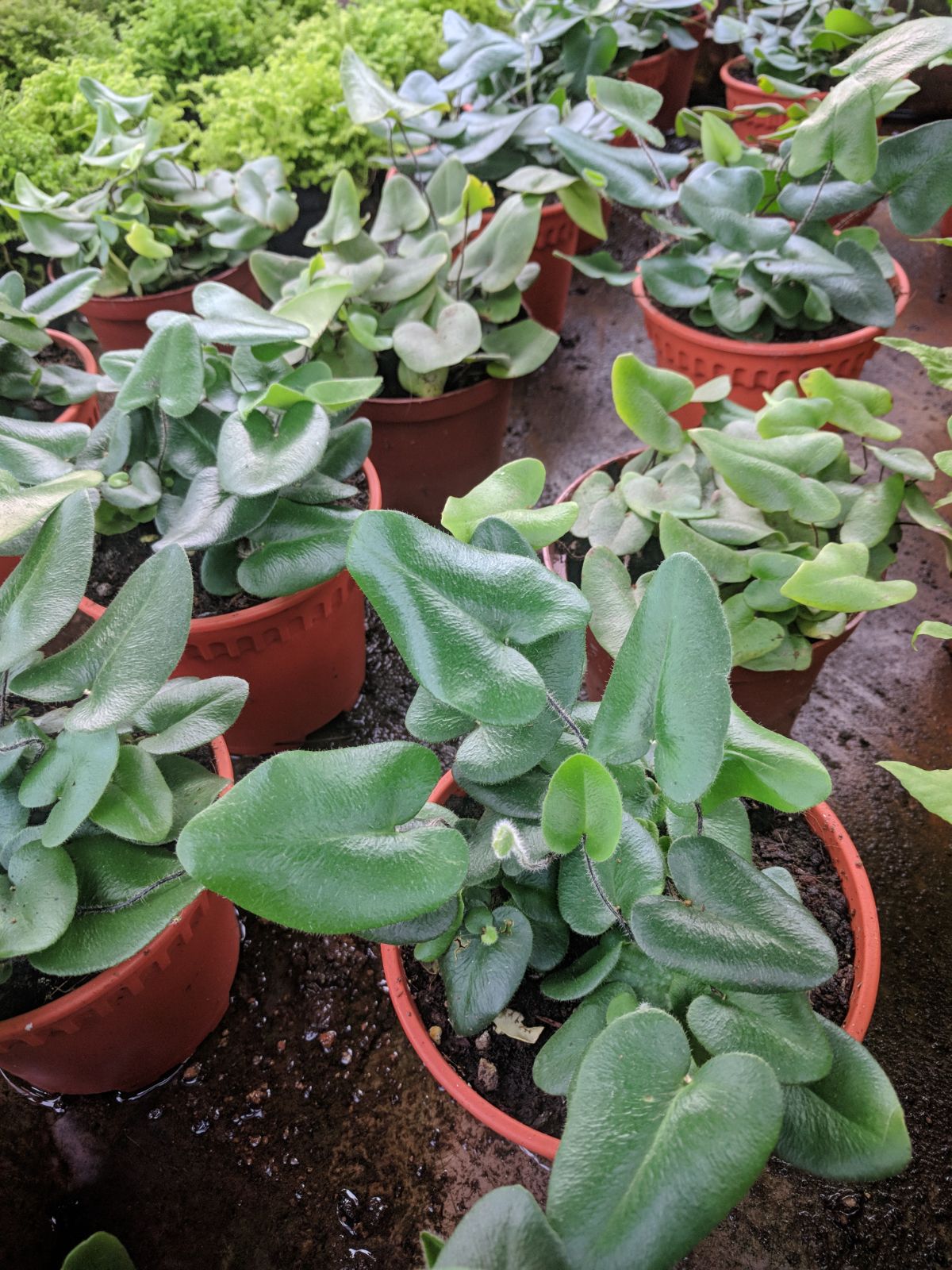
| Fern name: | Heart leaf fern |
| Lighting requirements: | Bright, indirect light |
| Watering requirements: | Moderate |
| Humidity requirements? | 60 to 80% |
| Pet safe? | Yes |
This sweet little fern doesn’t grow very large, so it can be kept in smaller pots or even terrariums! Planting up your fern in a terrarium can be a wonderful idea, as the enclosed space will help regulate moisture levels making it possible to keep ferns happy in even the driest of homes.
Named for its charming heart-shaped leaves, heart leaf fern enjoys plenty of moisture and high humidity, like other fern types. To prevent sun-scorched leaves, place your plant in dappled light or a windowsill that receives morning sun. Regular pruning can help keep heart leaf ferns from getting overly leggy.
6. Blue star fern (Phlebodium aureum)
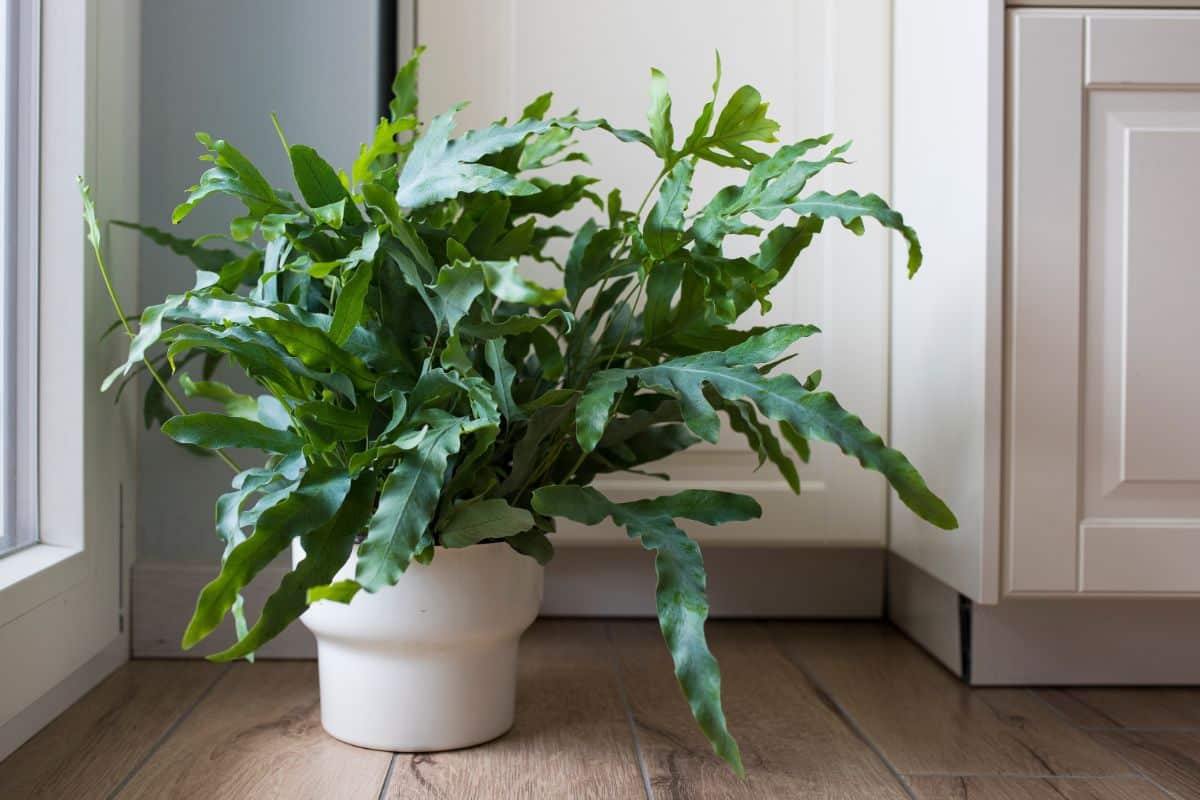
| Fern name: | Blue star fern |
| Lighting requirements: | Medium to low light |
| Watering requirements: | Moderate |
| Humidity requirements? | 75% and above |
| Pet safe? | Yes |
Hailing from the tropical rainforests of South America, blue star fern is a perfect pick if you like plants with unique colors. While most other fern types come in shades of green, blue star fern has markedly bluish-tinted foliage. Leaves are large and lobed and cascade beautifully when potted up in a terracotta planter.
Blue star ferns are a relatively hardy species, so they are recommended for beginners. This is mostly because they can tolerate lower indoor humidity levels; however, they will still benefit from the addition of a pebble tray or a nearby humidifier. Blue star ferns are also tolerant of slightly drier soil, and they don’t like soggy roots.
7. Lady fern (Athyrium filix-femina)
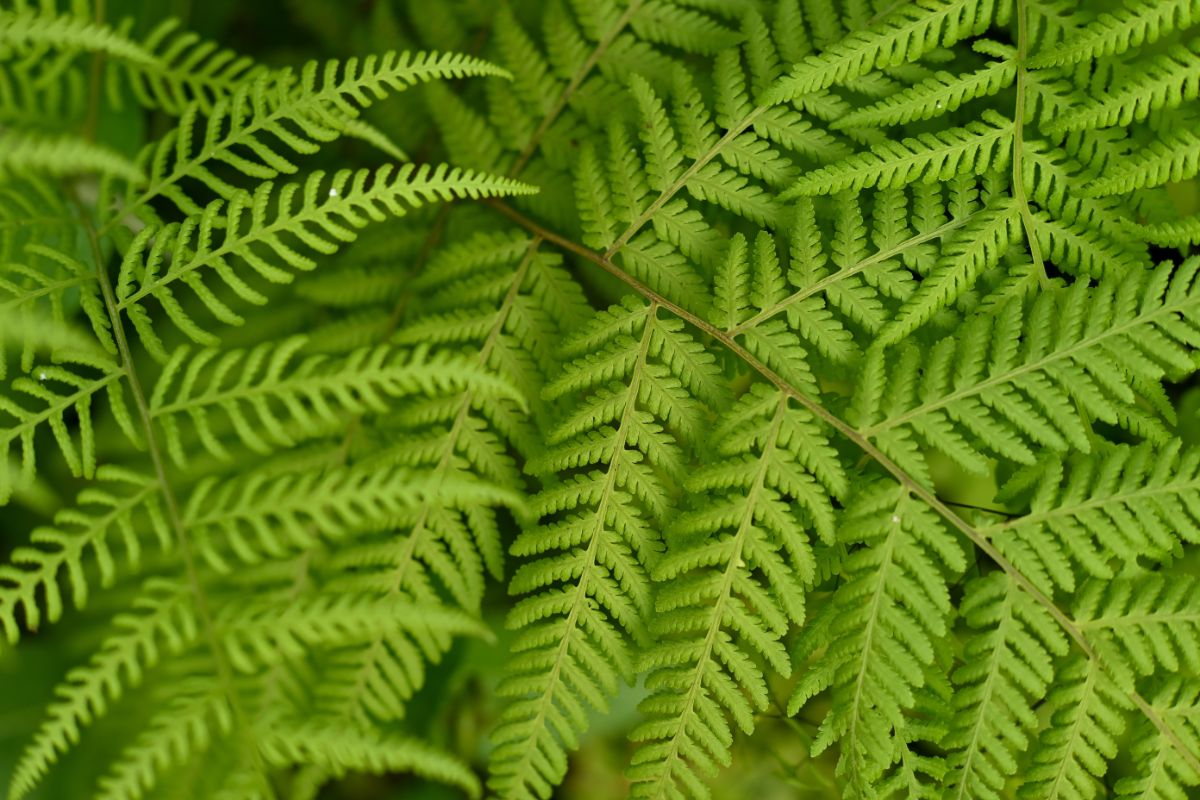
| Fern name: | Lady fern |
| Lighting requirements: | Bright, indirect light |
| Watering requirements: | Moderate |
| Humidity requirements? | 60% and above |
| Pet safe? | Yes |
Lady ferns have that “classic” fern look with feathery leaves that provide a nice pop of color and lots of texture. Often kept as an outdoor plant, these ferns can also be grown indoors, although it is trickier.
The key to keeping lady ferns happy inside is making sure they receive adequate humidity levels. These moisture lovers require frequent watering and should be misted daily if you don’t have a nearby humidifier. You can also place the plant’s pot on a pebble tray and allow evaporation to increase ambient humidity levels.
For even more excitement, check out the ‘Grey Ghost’ lady fern. This thrilling cultivar is closely related to the common lady fern, but it has lighter, slightly silver-toned leaves that make it a truly spectacular houseplant.
Alternatively, the painted lady fern is another fine pick. This fern type boasts purple-toned stems and silvery-gray, feathery foliage.
8. Crocodile fern (Microsorum musifolium)
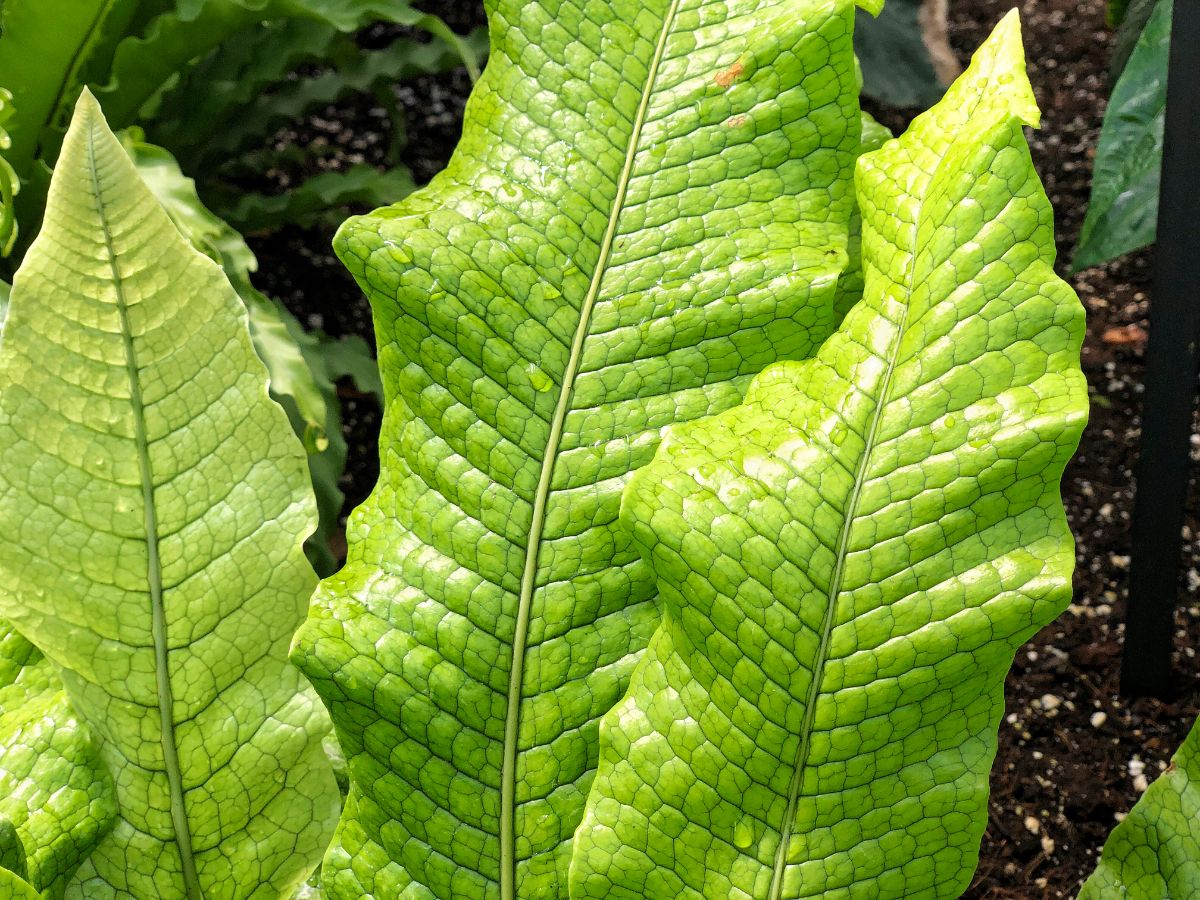
| Fern name: | Crocodile fern |
| Lighting requirements: | Bright, indirect light |
| Watering requirements: | Moderate |
| Humidity requirements? | 60% and above |
| Pet safe? | Yes |
Crocodile ferns are a fun plant to keep. Their bright green, leathery-looking leaves have visible veining that resembles the skin of a crocodile. They are also slow growing but can become true statement pieces when fully mature, as they can grow up to 5’ high.
Native to southeast Asia and Australia, crocodile ferns are tropical species that like warmer temperatures and lots of humidity. They also prefer bright, indirect light, as too much bright sun can cause leaf damage. If you live in a warmer location (zones 10 and above), these ferns can also be kept outdoors.
9. Rabbit’s foot fern (Davallia fejeensis)
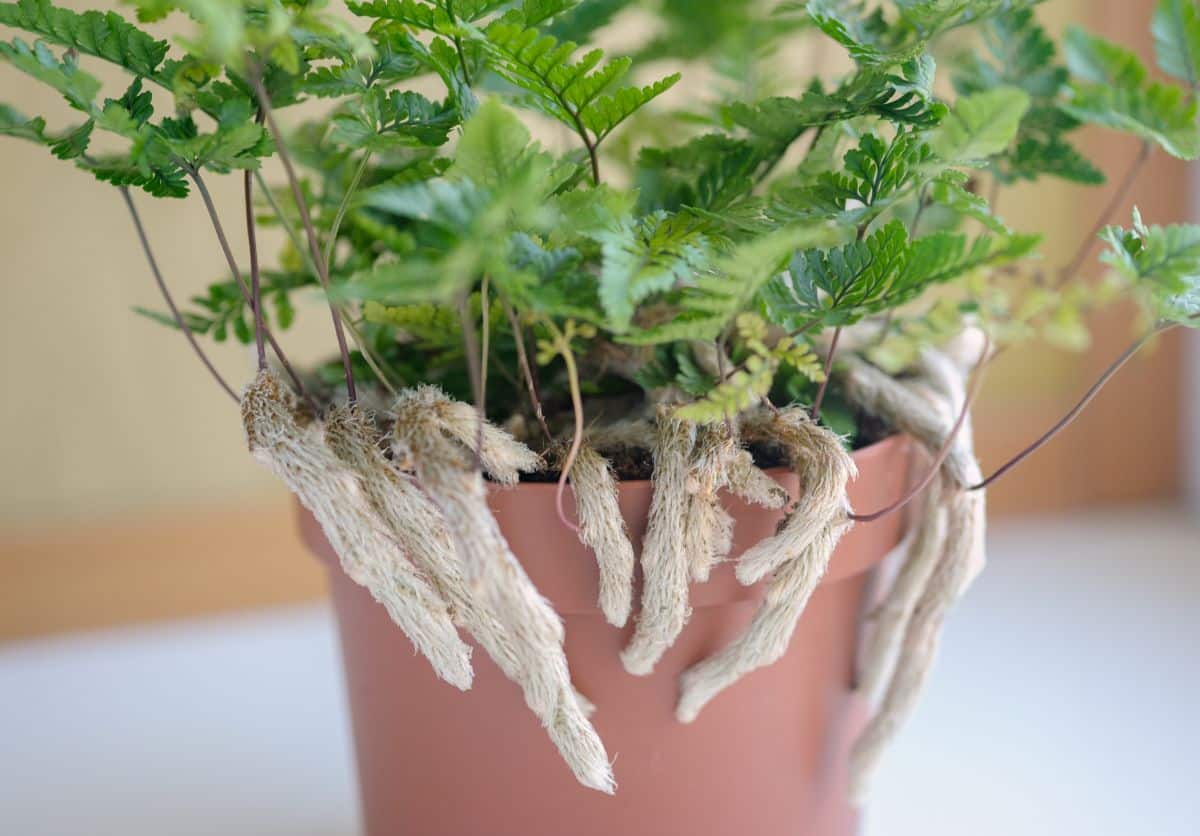
| Fern name: | Rabbit’s foot fern |
| Lighting requirements: | Bright, indirect light |
| Watering requirements: | Moderate |
| Humidity requirements? | 60 to 90% |
| Pet safe? | Yes |
For something a bit different, try out a rabbit’s foot fern. This plant’s frilly, green leaves look like many other fern types, but if you look closer, you’ll notice something interesting beneath those leaves! This fern type has fuzzy rhizomes that sprout from the soil line and look a bit like the furry feet of a rabbit.
Growing best in bright, indirect light and warmer temperatures, rabbit’s foot ferns love humidity too. They also prefer to be fed with a balanced, organic fertilizer approximately monthly throughout the growing season. And, for an even more impressive plant, try keeping this fern in a hanging basket so those furry “rabbit feet” can show in all their glory.
10. Lemon button fern (Nephrolepis cordifolia)
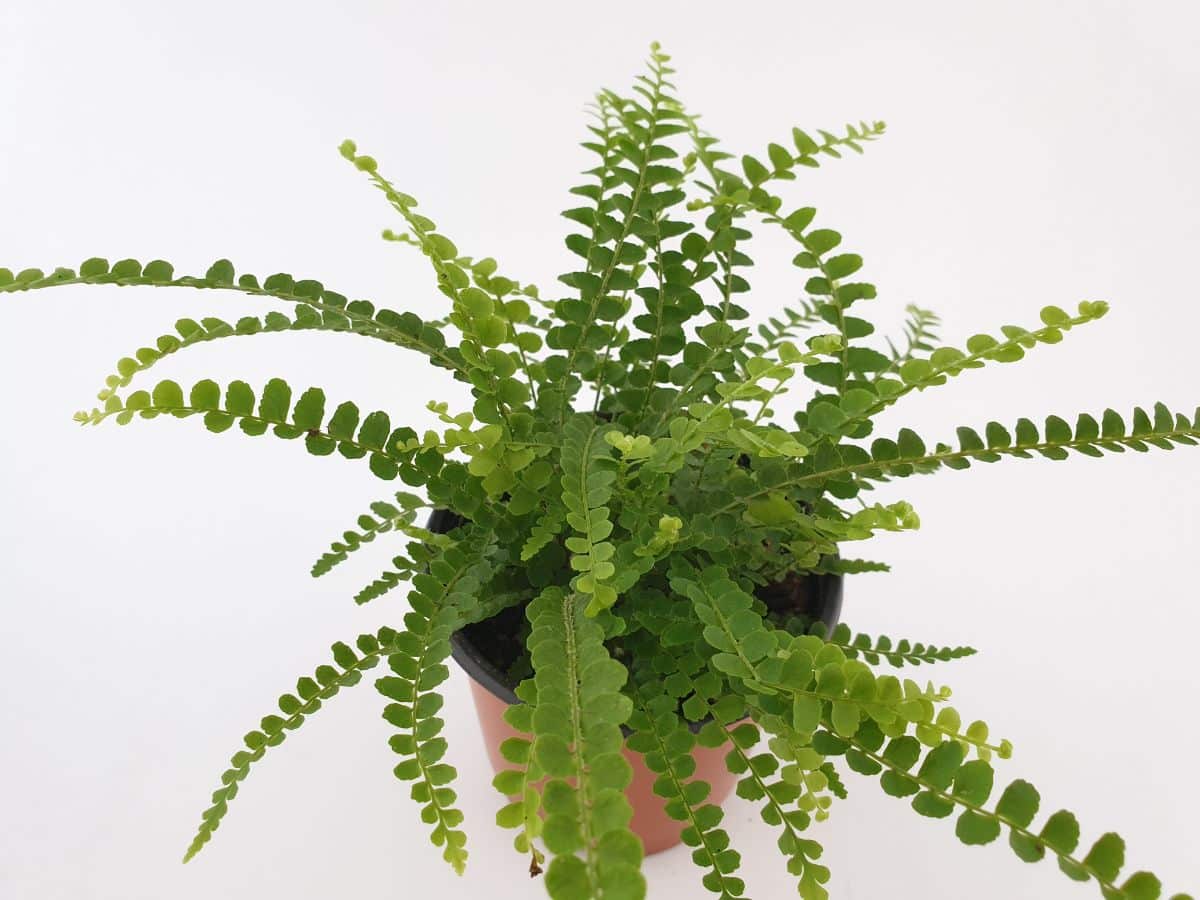
| Fern name: | Lemon button fern |
| Lighting requirements: | Bright, indirect to low light |
| Watering requirements: | Moderate |
| Humidity requirements? | 60% and above |
| Pet safe? | Yes |
With a name like “lemon button,” you’d expect this fern to be adorable… and it is! Lemon button ferns are native to Hawaii and are a petite fern species with vibrant green, rounded leaves on gently tapering stems. Due to their small size, they can be kept in both terrariums and tabletop planters.
Great for beginning growers, lemon button ferns are more forgiving than many other fern species. They can tolerate a range of light conditions, including lower light, and they can handle soil that dries out on occasion. Just do your best to water them regularly and fertilize your fern several times a year for optimal growth.
11. Cretan Brake fern (Pteris cretica)
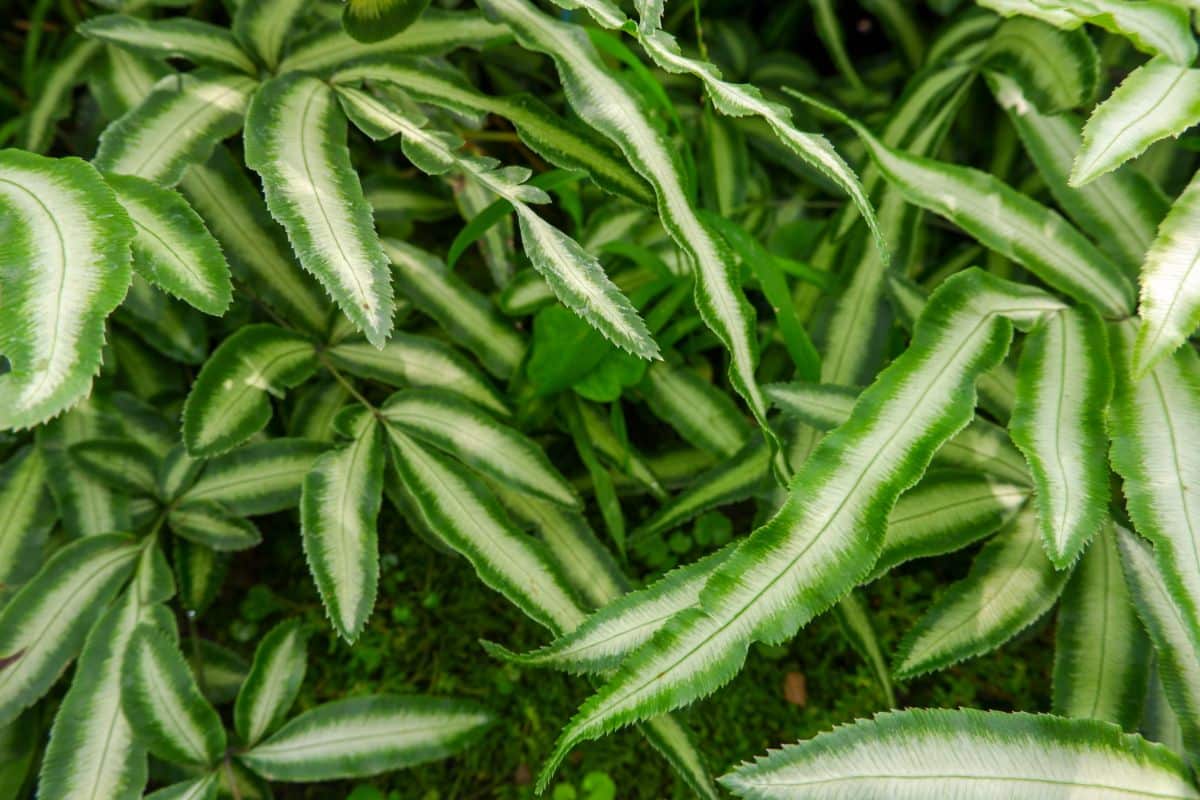
| Fern name: | Cretan Brake fern |
| Lighting requirements: | Bright, indirect to low light |
| Watering requirements: | Moderate |
| Humidity requirements? | 50% and above |
| Pet safe? | No |
Cretan Brake ferns and blue star ferns have similarly shaped oversized, lobed leaves; however, Cretan Brakes’ leaves are variegated for even more color. These ferns look quite tropical, but they are easier to care for than many other ferns on this list.
Native to Europe, Africa, and Asia, Cretan Brake ferns are slower-growing species, but they will grow to about 24” high when mature. These plants prefer well-draining soil with a neutral pH and can tolerate brighter light to part shade.
12. Asparagus fern (Asparagus setaceus)
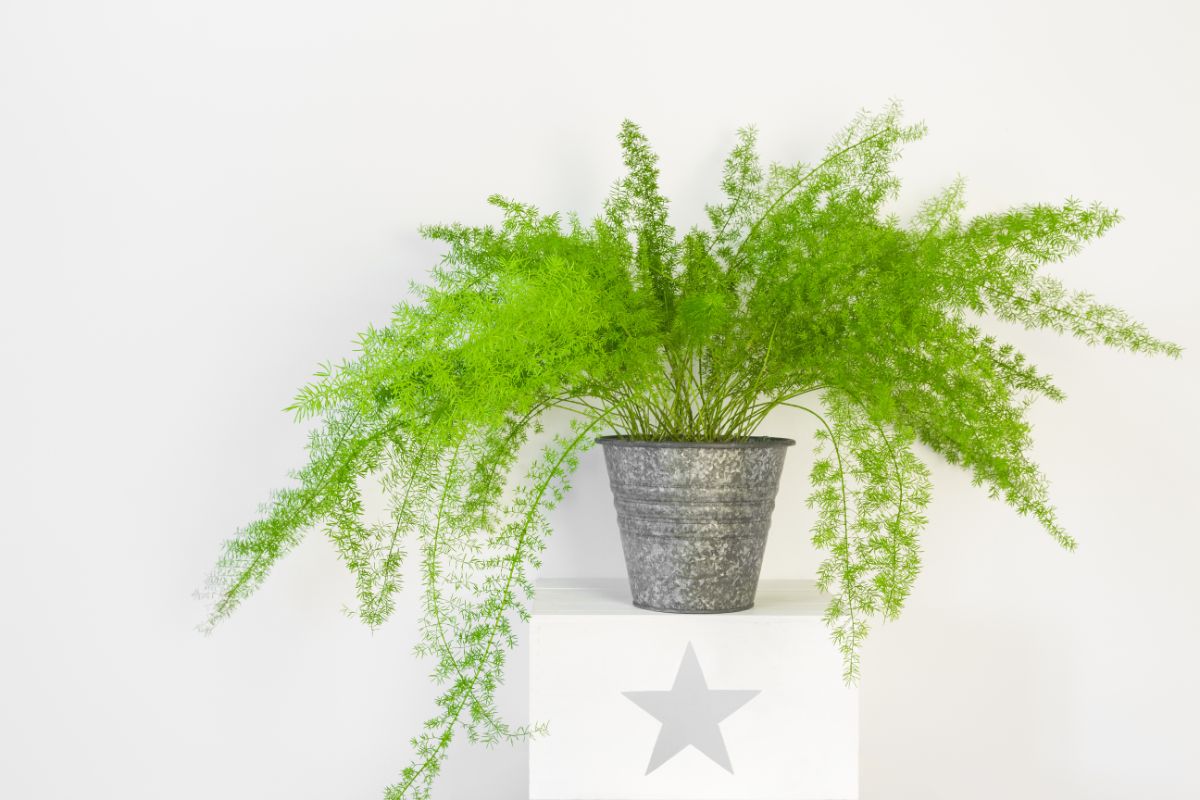
| Fern name: | Asparagus fern |
| Lighting requirements: | Bright to bright, indirect light |
| Watering requirements: | Moderate |
| Humidity requirements? | 60% and above |
| Pet safe? | No |
Despite its name, asparagus fern isn’t really a true fern. In fact, it actually belongs to the asparagus family, but it has a similar appearance and care requirements to true ferns. Preferring frequent watering and high humidity, asparagus ferns can tolerate brighter light than other fern types.
Asparagus ferns have a very light and airy appearance, with branches adorned with delicate, needle-like leaves. Despite its soft look, take care with this plant as it has small thorns on its stems that are quite sharp. Asparagus ferns are also toxic to pets, so they should be kept well out of the way of any cats, dogs, or small children.
13. Kangaroo paw fern (Microsorum diversifolium)
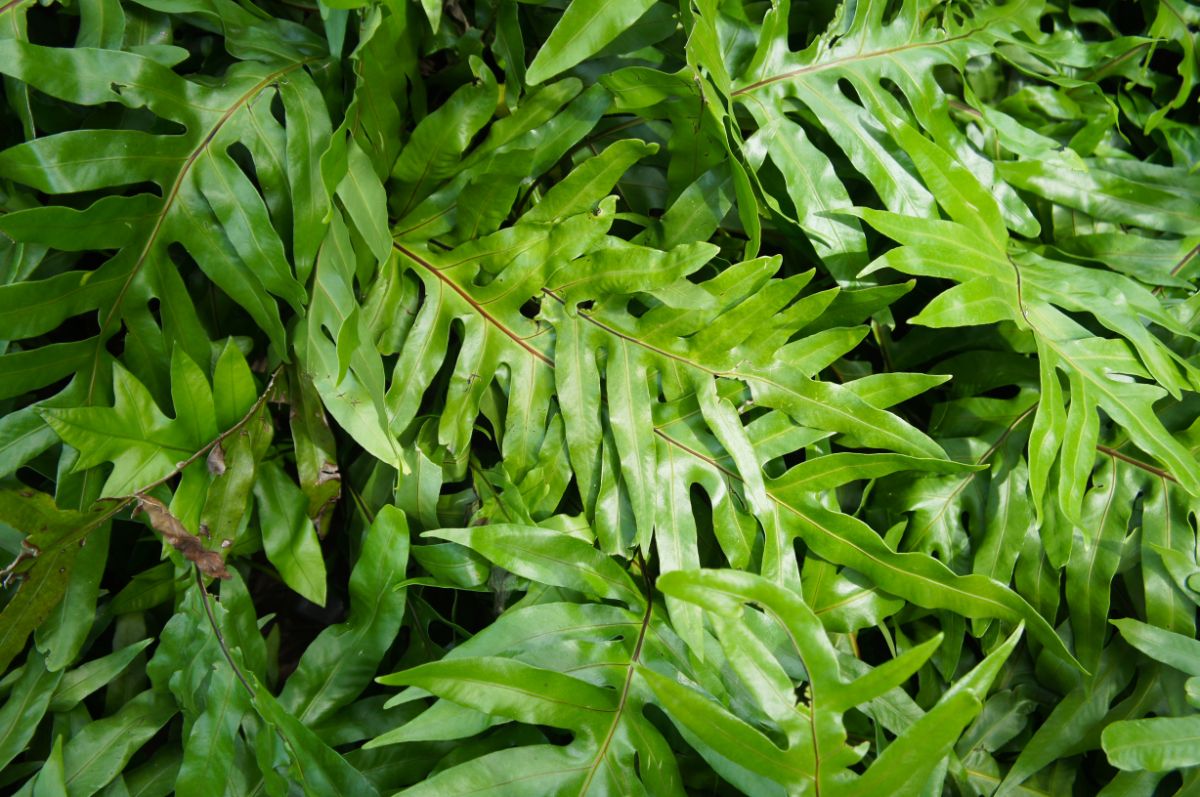
| Fern name: | Kangaroo paw fern |
| Lighting requirements: | Medium to bright, indirect light |
| Watering requirements: | Moderate |
| Humidity requirements? | 75% and above |
| Pet safe? | Yes |
With star-shaped bright green leaves, the kangaroo paw fern has a slightly whimsical appearance thanks to its fronds that grow in varying shapes. An epiphyte in nature, kangaroo paw ferns are often kept as tabletop plants, but they can be grown in hanging baskets too.
Leaves are leathery and slightly glossy, and the entire plant is relatively drought-tolerant for a fern, so you don’t need to stress as much about watering it. However, like other fern types, it does do best with consistently moist soil and high humidity.
14. Hen and chicks fern (Asplenium bulbiferum)
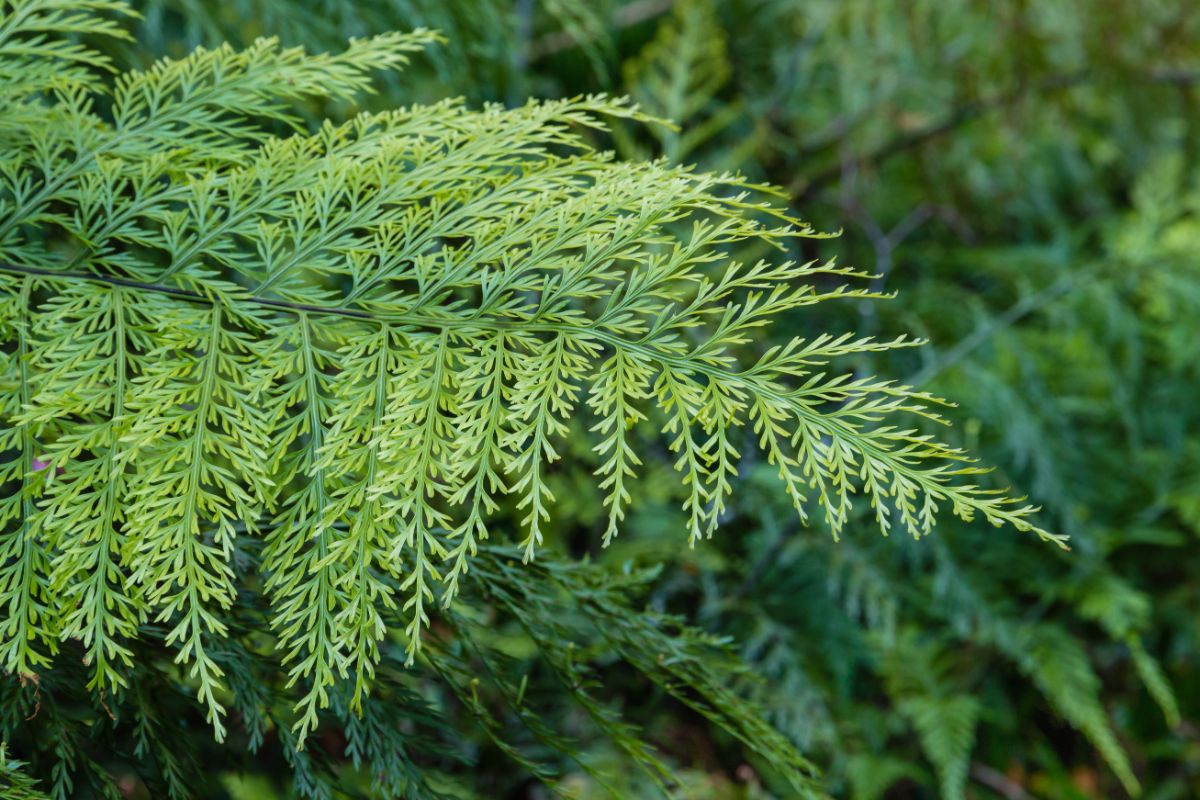
| Fern name: | Hen and chicks fern |
| Lighting requirements: | Bright, indirect light |
| Watering requirements: | Moderate |
| Humidity requirements? | 60% and above |
| Pet safe? | Yes |
A less common fern type, hen and chick ferns have lacy leaves that almost look a bit like parsley or cilantro. Those leaves appear on elegant arching branching, and the entire plant is a vivid green color that can’t help but put a smile on your face.
Because it isn’t as common as other fern types, you may have a bit of difficultly locating this fern, but checking online is always a good option. If you manage to find one, pot up your plant in well-draining soil and provide it with indirect light. When properly maintained, hen and chicks ferns can grow between 3 and 4’ high.
15. Holly fern (Cyrtomium falcatum)
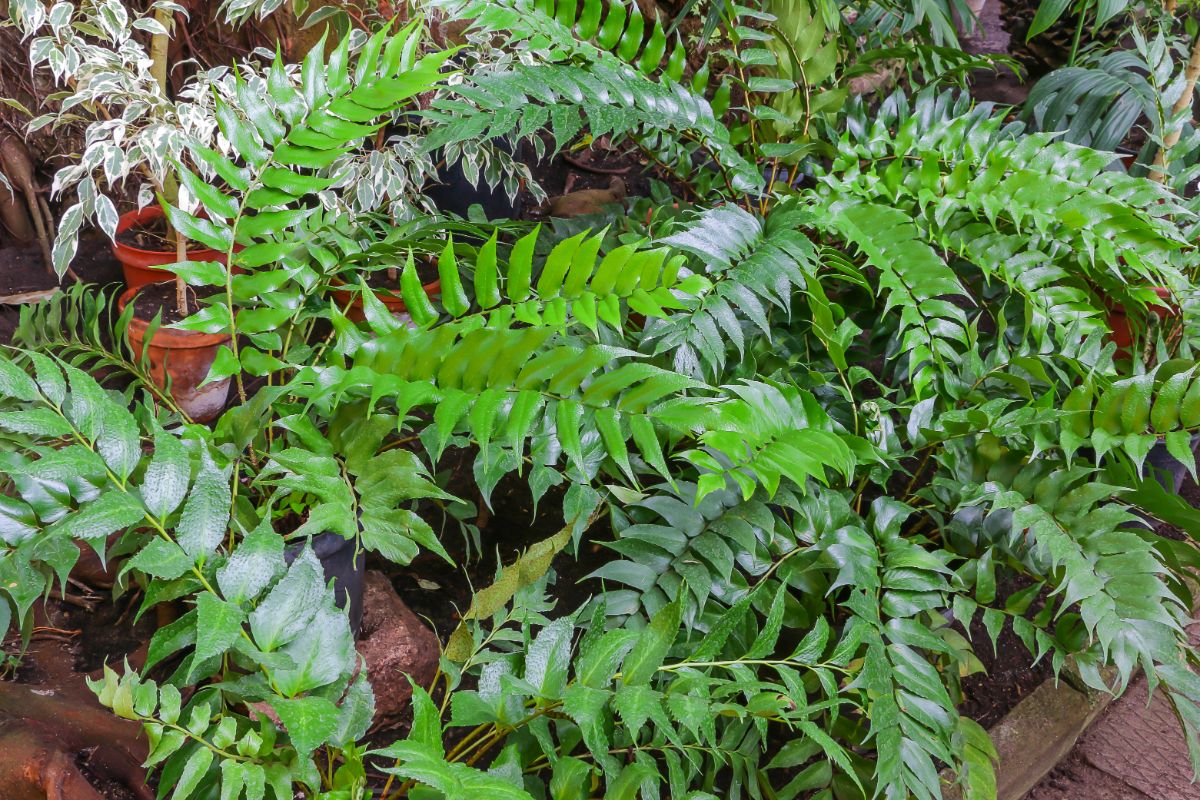
| Fern name: | Holly fern |
| Lighting requirements: | Bright, indirect light |
| Watering requirements: | Moderate |
| Humidity requirements? | 50% and above |
| Pet safe? | No |
As the name implies, this fern species has spiky and angular leaves that somewhat resemble the leaves of a holly bush. Leaves are glossy and somewhat waxy when touched, which only adds to this fern’s unique charm.
Holly ferns are native to Asia, where they grow in moist areas, such as along coastal cliffs and riverbanks. Indoors, these ferns do need an extra boost of humidity and should be watered with approximately 1” of water per week.
Tips for growing healthier ferns indoors
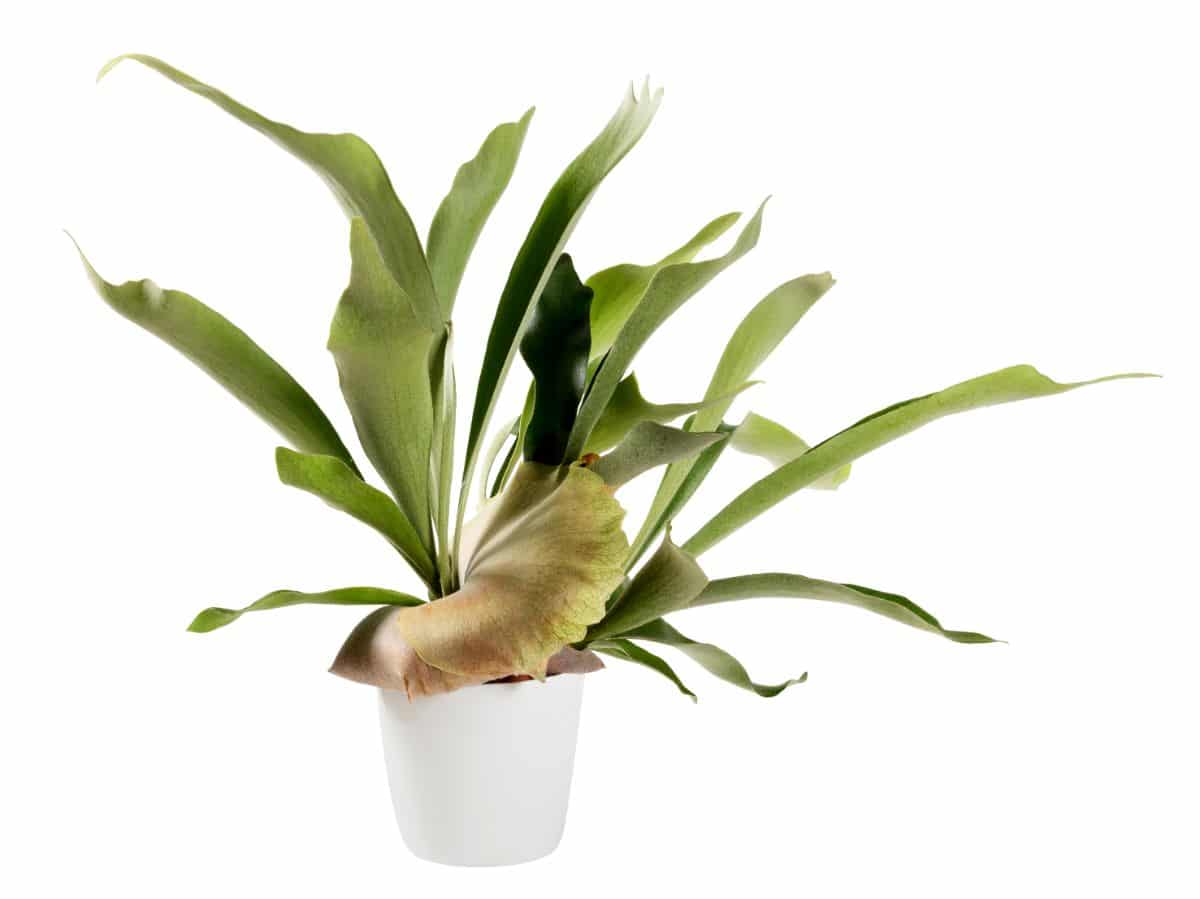
If you’re new to keeping houseplants, ferns can be a little bit tricky. Unlike cacti, succulents, and certain tropical plants, ferns have relatively high humidity needs. Below we’ll cover some tips on boosting indoor humidity levels and other tricks for growing healthier ferns indoors.
- Humidity
The average humidity level in most homes is between 30 and 40%. However, ferns love moisture, and most ferns grow best when humidity levels are 60% or higher. If they’re grown in drier areas, ferns may become brittle, lose leaves, or experience leaf yellowing or brown leaf tips.
Keeping ferns indoors means that you will need to figure out ways to ensure your plants receive enough humidity. That can mean moving your plants into a steamy bathroom space or growing your ferns inside an enclosed glass cabinet, which can help regulate moisture levels.
For smaller fern types, like heart leaf ferns, you can also try potting up your plants in a glass terrarium or old fish tank. Potted plants can also be positioned on top of a pebble tray filled with water. As the water evaporates, it will naturally boost humidity levels around your ferns.
If you don’t mind a little extra work, you can also mist your ferns by hand. Just keep in mind that moisture can evaporate quickly, especially during the winter months. So, you’ll want to spray your ferns several times a day to make sure they grow their best!
- Soil
Most fern species naturally grow on the forest floor, so they do require a certain type of soil. For best results, ferns should be grown in rich and well-draining soil to avoid waterlogged roots and root rot. If your potting mix seems heavy, stirring in a bit of sand or peat can lighten things up and improve drainage too.
You can also make your own DIY fern potting mix by blending together equal parts potting mix, peat moss, and sand.
- Lighting
As understory plants, most fern species prefer bright, indirect light or dappled sunlight. However, some ferns, like the blue star fern, can tolerate lower light rooms. Too much bright, direct sunlight can cause leaves to turn yellow or crispy and brown from sunburn.
Signs that your ferns aren’t getting enough light include yellow leaves, pale leaves, stunted growth, and plants that seem to be straining toward the light. If this occurs, move your plants to a brighter location or add a grow light to your setup.
- Watering
Ferns are moisture-loving plants, so they do need regular watering. Depending on the species you’re growing, the time of the year, and the potting mix you’re using, you’ll want to water your plants about once or twice a week.
When watering ferns, try to water from the bottom whenever possible. It’s also best to water thoroughly and deeply and allow extra water to drain away from your plant. This will ensure your ferns aren’t sitting in water, which can contribute to issues like root rot.
- Temperature
Most fern species will do well when maintained at room temperature, but you do want to protect your ferns from extreme heat or cold. If you keep your houseplants outside during the summer, be sure to move your ferns indoors before the first frost of autumn. Once indoors, you’ll also want to position your plants away from A/C or heating units, which can cause temperatures to fluctuate rapidly. - Fertilizer
Ferns are not heavy feeders, so it’s important that you don’t overfertilize your plants. While it may vary depending on the fern species you’re growing; most ferns will do well with a diluted application of organic, liquid fertilizer once or twice a month throughout the growing season. Stop fertilizing your ferns in fall and winter, as they won’t be growing as rapidly at this time and have no need for extra nutrients.
- Repotting
Over time, ferns may outgrow their pots or become rootbound. When this occurs, you’ll want to repot your plant in a new pot that is one or two sizes larger than your existing planter. Repotting is best done in the springtime.
If your fern seems very large, you can also try gently teasing the plant in two to create two new plants. Take this time to snip away any old, yellow, or damaged fronds to freshen up your plant’s appearance.
Frequently asked questions
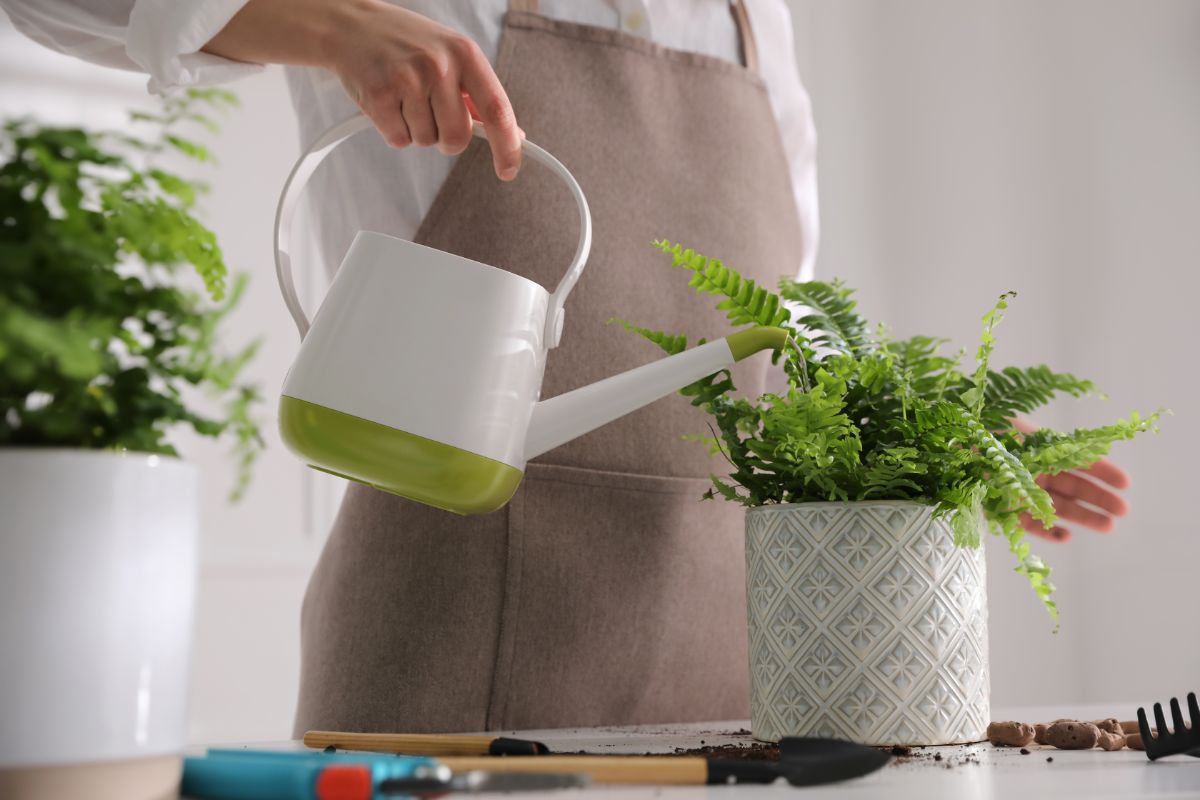
Ferns are humidity-loving plants, so they usually will need an extra boost of humidity when grown inside. While you can add a humidifier to your grow room setup, you can also increase moisture levels by misting your plants by hand. For best results, aim to mist your ferns three to four times a day.
Ferns like moisture, and most fern species prefer their soil to be consistently moist but not soggy. Although it can vary depending on the type of fern you’re growing, the majority of ferns should be watered one to two times a week.
The most common reason that growers struggle with keeping ferns indoors is humidity. Average indoor humidity levels are much lower than outside, and it can help to add a humidifier or pebble tray to your fern’s setup. Humidity levels will drop even lower in wintertime, so you may also want to mist your plants by hand.
Ferns prefer to be watered from the bottom. Getting water on your fern’s leaves or into the center of the plant may cause mildew and rot over time.
Any fern variety that stays small will do well in a terrarium. Some good options include heart leaf ferns, lemon button ferns, and bird’s nest ferns.
The easiest way to ensure your ferns receive enough humidity is to place your plants near a humidifier. You can also position your plant pots on a pebble tray or move your plants into a room with high humidity, like a frequently used bathroom.
Summary
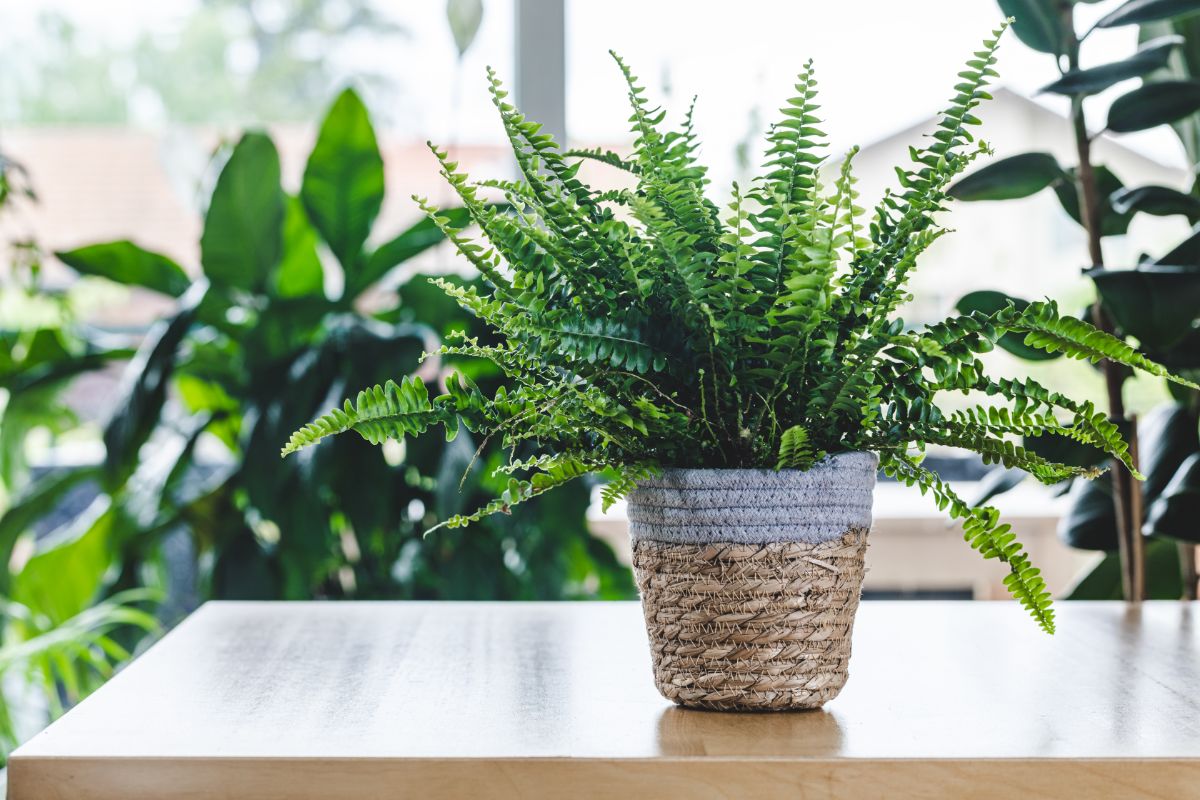
From miniature heart leaf ferns to large crocodile ferns, there is so much variety in the plant kingdom and within fern species as well. Whether you like feathery leaves or draping fern types that are just right for hanging baskets, there are plenty of ferns to choose from when you know what you’re looking for.
We hope you liked this article, but if you want to read up on more popular houseplants to try, check out this guide for more inspiration!

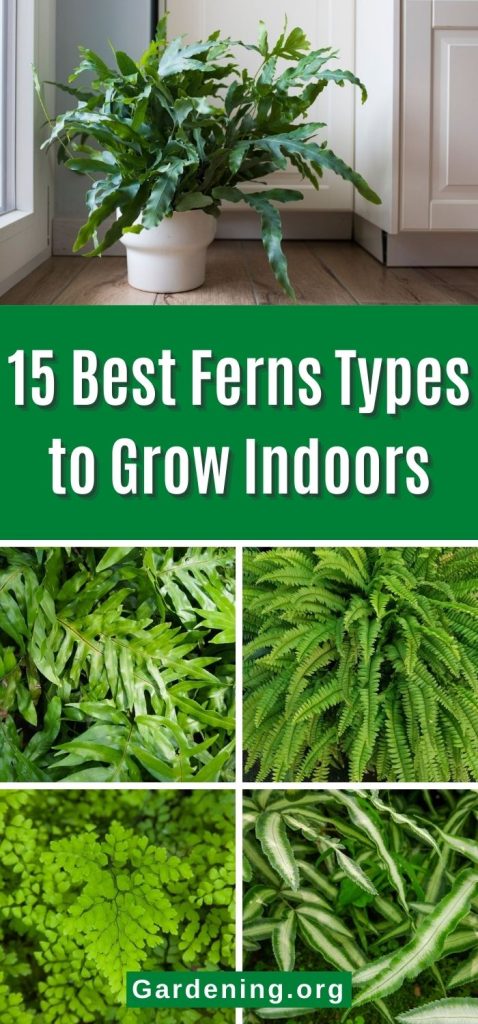
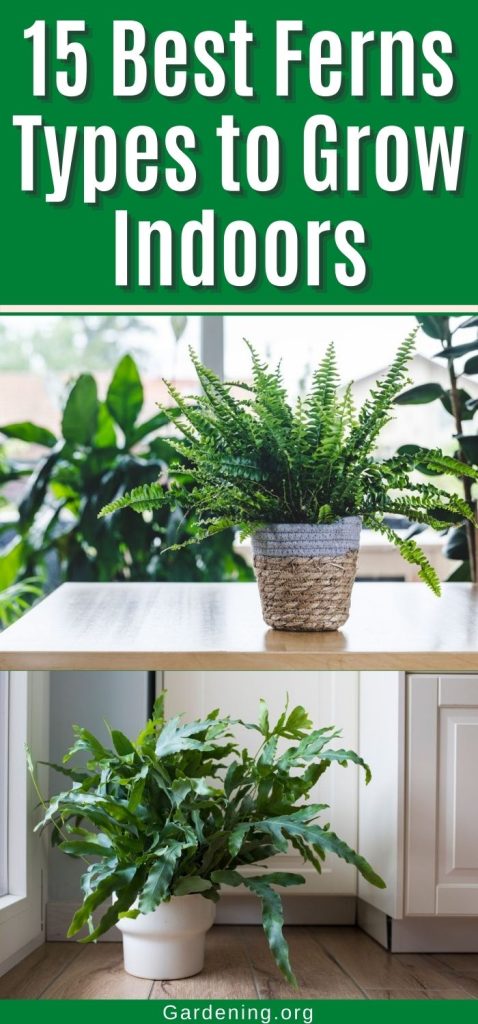
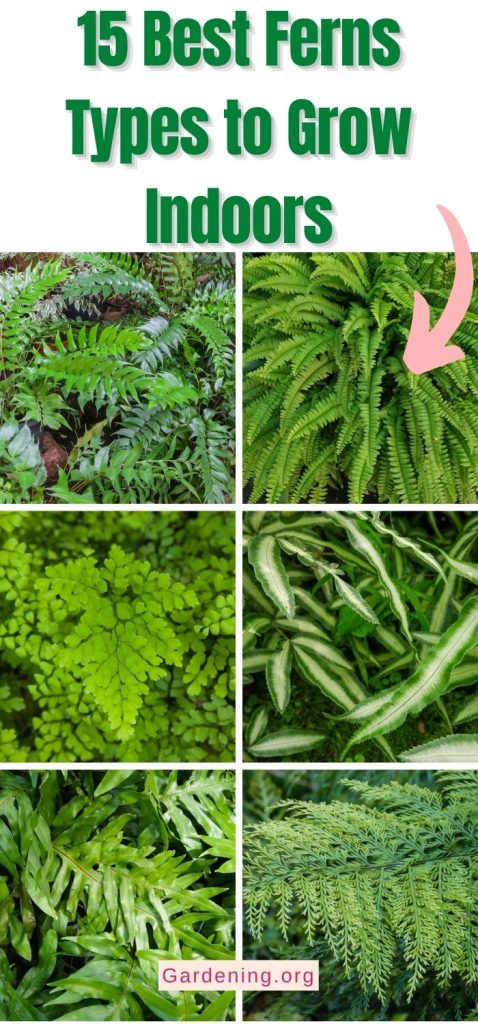
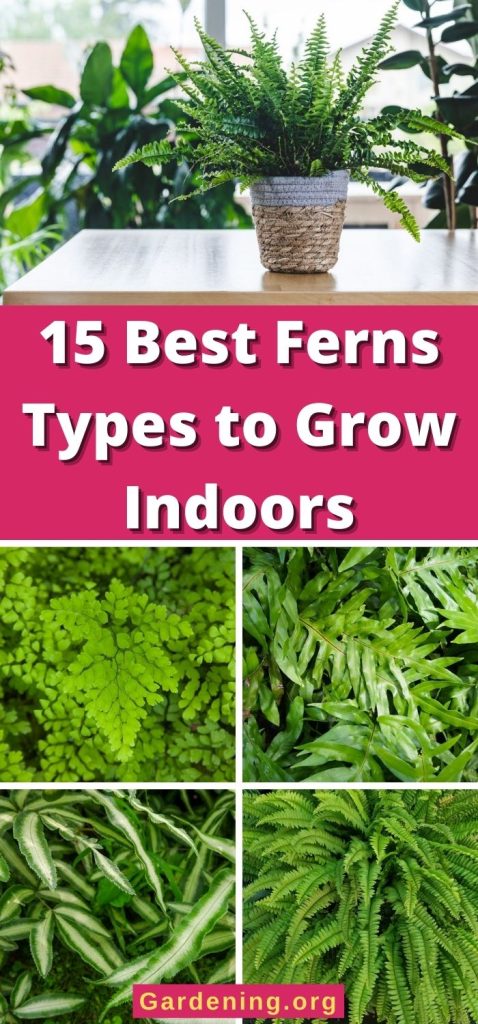
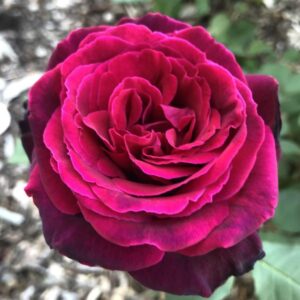
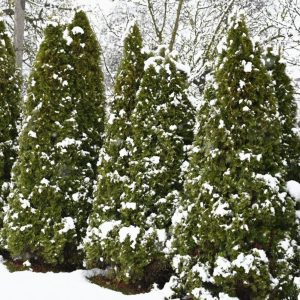


Leave a Reply